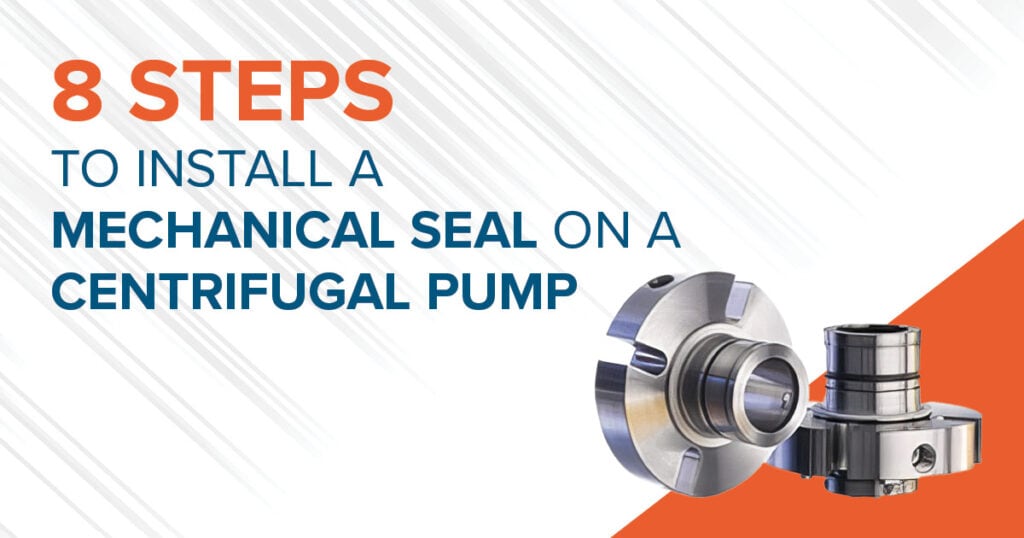The mechanical seal is critical to the overall performance and durability of a centrifugal pump. It is designed to prevent fluid from leaking from the rotating shaft. Mechanicals seals feature two smooth and flat seal faces. One rotates with the shaft, while the other remains stationary with the pump casing. The seal faces are flexible and will move in conjunction with rotation to make up for any slight misalignments and wear.
There are many different types of mechanical seals, including single-cartridge and multi-cartridge designs. A poorly sized, installed, or maintained seal can lead to serious pump problems. In fact, mechanical seal failure is one of the most common issues in centrifugal pumps. Selecting the right type of seal for your pump is crucial—so is installing it correctly. Below are eight steps you should take when installing a new mechanical seal on your centrifugal pump:
- Turn Off the Motor
The first step is fairly obvious. Cut power to the pump motor, and turn off the main power supply. There should be no risk of the equipment starting up during mechanical seal installation or maintenance!
- Drain the Pump Casing
Close inlet and outlet isolation valves. Remove the pump casing drain plug, and drain the casing of fluid.
- Access the Mechanical Seal
Depending on the configuration of your centrifugal pump, this step may be slightly different. You may have a back pullout design or not. Follow the necessary steps to disconnect the pump casing, or pull out the casing to access the impeller and mechanical seal for removal, maintenance, or installation.
- Disconnect the Impeller
The mechanical seal sits behind the impeller on the pump shaft. There may be screws or a bolt to remove to disconnect the impeller and access the mechanical seal.
- Remove the Old Seal
Whether you are upgrading the factory seal or replacing a worn mechanical seal, you need to remove the existing seal from the shaft and casing. In most cases, set screws are used to hold the seal components in place. Unscrew those to remove both the rotary seal parts and the stationary part of the mechanical seal.
- Install the New Seal
Assuming your new mechanical seal is properly sized and configured to match your pump, you can now install it. This should always be done in a clean workspace, and you should avoid bodily contact with seal faces throughout the process. Natural oils can compromise the lubrication and seal faces. Follow the proper instructions to install each component of the new seal, along with a new O-ring or gasket.
- Backtrack Steps 3–5
From here, you simply work backward through the same process. Once the mechanical seal is installed, you are ready to reinstall the impeller and reconnect the pump casing. The pump should be put back together properly with all the same pieces in the correct places. Don’t forget to open the inlet and outlet valves to refill the pump casing. Some centrifugal pumps may require additional venting during this step. The pump and motor should be realigned with a tolerance of .001″–.002″ to avoid mechanical seal failure.
- Restart the Pump
Once the new mechanical seal is installed and the pump is reassembled, you can reconnect the power supply and turn on the pump. Let it run for a while to ensure everything works correctly. Check the shaft for any fluid leaks, and perform all necessary safety procedures.
If you follow these simple steps, you can install a new mechanical seal easily. The biggest challenge for most operators is selecting the best mechanical seal for the equipment and application. Many different options are available, and installing the wrong seal (or installing it incorrectly) could have disastrous consequences.
DXP Pacific is here to help with your mechanical seal selection, installation, and maintenance needs. We work with some of the world’s best mechanical seal manufacturers like John Crane, Flexaseal, Flowserve, Chesterton, and AES. Contact us today and find the best mechanical seal solutions for your centrifugal pump.

